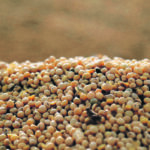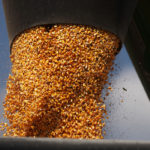The U.S. Department of Agriculture’s November World Agricultural Supply and Demand Estimates report has raised some eyebrows. “It was a surprise today, I have to admit,” said DTN lead analyst Todd Hultman. The big shock was contained in the new U.S. corn yield estimate of 174.9 bushels per acre, up from October’s 173. That is […] Read more
Tag Archives WASDE

USDA tightens production, carryout estimates
The department’s World Agricultural Supply/Demand Estimates reported little change, although projections fell slightly
WINNIPEG (MarketsFarm) — August figures from the U.S. Department of Agriculture’s World Agricultural Supply-Demand Estimates provided few surprises and not much change after their release on Aug. 11. However, crop production and carry-out estimates were tightened from those in July. The USDA’s 2023-24 corn production estimate declined by 209 million bushels from July to 15.111 […] Read more
U.S. corn yield estimate questioned
The U.S. Department of Agriculture’s latest U.S. corn yield estimate does not reflect reality, says an analyst. The USDA dropped its national average corn yield for 2023-24 to 177.5 bushels per acre, down from its forecast of 181.5 bu. a month ago. DTN lead analyst Todd Hultman thinks that is still too high and expects […] Read more

Corn prices fall as supplies expected to increase
Some believe ending stocks will soar to 67 million tonnes by the end of 2023-24, up from 35.98 million tonnes this year
Arlan Suderman, chief commodities economist with StoneX, believes ending stocks will soar to 67 million tonnes by the end of 2023-24, up from 35.98 million tonnes this year.
South American soy crop likely to shrink
Analysts believe the United States Department of Agriculture is kicking the can down the road when it comes to downsizing South America’s soybean production. The USDA left production unchanged at 133 million tonnes for Brazil and 48 million tonnes for Argentina in its February World Agricultural Supply and Demand Estimates report. Mac Marshall, vice-president of […] Read more

Latest USDA supply/demand report generates mixed results
WINNIPEG (MarketsFarm) – In the United States Department of Agriculture’s (USDA) supply and demand report issued Friday, corn estimates were lowered from the October report and those for soybeans largely remained the same for the 2019/20 marketing year. There were some revisions for wheat as well. In the latest World Agriculture Supply and Demand Estimates […] Read more

USDA forecasts bigger-than-expected U.S. corn crop
CHICAGO, Aug. 12, (Reuters) – The U.S. corn harvest will be bigger than previously forecast, the U.S. Department of Agriculture said on Monday, as the government issued a surprise boost to its yield estimate despite ongoing concerns in the country about a wet spring and dry summer limiting production. For the 2019/20 crop year, the […] Read more

USDA raises corn stock projections, lowers soybeans
Winnipeg – Updated supply/demand estimates from the United States Department of Agriculture came largely in line with expectations, with larger U.S. and world corn and wheat stocks and slight downward revisions to the soybean carryout numbers. Expected U.S. corn ending stocks for the current marketing year were raised by 200 million bushels, to 2.035 billion […] Read more

WASDE fails to move markets off lower path
The USDA’s supply and demand report failed to offer any insights into a market illuminated only by a Chinese lantern
The world’s grains and oilseeds markets seem solidly stuck in sideways, with the only light forward coming from the fragile glow of a Chinese lantern. World Agricultural Supply and Demand Estimates by the United States Department of Agriculture cast little more illumination on where prices might be headed, other than more of the same. The […] Read more
CBOT soybeans recover after dismal USDA data
The latest United States Department of Agriculture (USDA) reports surprised traders leading to an immediate sell-off for Chicago Board of Trade (CBOT) soybean contracts. “It’s a pretty interesting report to tell you the truth, but really the focus has been on the beans,” said Jack Scoville of Price Futures Group in Chicago, Ill. It had […] Read more




